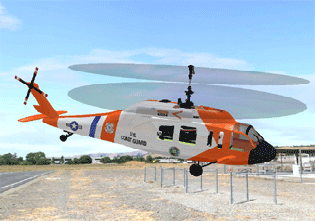
- #Setting to hover with clearview simulator how to
- #Setting to hover with clearview simulator serial
- #Setting to hover with clearview simulator download
Here a single port is opened first, and then two more ports are opened. The colored bars are the files red is HTML text, gold represents style sheets, tan represents JavaScript, and blue lines are images. For a more accurate picture of how a page really loads you need to add the TCP port as a dimension of the drawing.įigure 2 shows files loading on seven TCP ports, represented by the grey horizontal lines, and the number of milliseconds that have elapsed. Keeping connections open and calling additional files on the existing connection reduces the number of round-trips, but it's hard to see this in the traditional waterfall illustration. But such a depiction does not account for the fact that since HTTP1.1, TCP connections are reused. File downloads are typically depicted as a waterfall (as you see in Figure 1 ) with one file represented per row in the report.

#Setting to hover with clearview simulator serial
For example, it's difficult to know which parts of the page are serial and which are downloading in parallel.

#Setting to hover with clearview simulator download
Visualizing the page download accurately, as it really flows, is essential to performance analysis. To combat the impact of long round-trips there are three main solutions you can try: you can reduce the number of serial round-trips by doing more in parallel and getting rid of excess weight, you can reduce the round-trip-time by moving your location closer to the user, or you can reduce server time. When you consider a server disk seek time for each request is usually less than 10ms, versus round-trips of hundreds of milliseconds repeated many times over, you'll see that distance and the number of round-trips are easily the most significant contributing factor in long page-load times. Japan and England are currently 120ms in round-trip time from California at minimum. There could be 50 round-trips back and forth between the client and server in these circumstances and the page-load time would still only have 1 second of network delay before any server time was added (50 RTs × 20ms = 1 sec).īut the story is much different for a user in Europe or Asia connecting to the same Silicon Valley server. Sending Acknowledgements for more data is more round-trips.įor users who are located near the Web site data center, say less than several hundred miles away such as a user in Los Angeles connecting to a server in Silicon Valley, RTT is only 20ms (.020 seconds) and not a significant factor in page load time. Sending a Get and receiving the first 3KB is one round-trip. Opening a TCP connection is one round-trip. Downloading a single Web page can require as few as 2 or 3 round-trips if the page is sparse, or many tens of round-trips for a rich appearance. A round-trip is a network packet sent by a client to a server, which then sends a response packet. Two of the biggest factors in page load delays are distance, measured as round-trip time (RTT), and the number of round-trips between the client and servers. But before we begin, find out how much you already know by taking the speed quiz called "How Do You Improve Page Loading?" that is included in this article.
#Setting to hover with clearview simulator how to
Then I'll show you how to perform your analysis using VRTA. I'll also introduce you to Visual Round Trip Analyzer (VRTA), a tool that can distinguish among the various factors that cause performance problems and present them as a graphical map. In this article, I'll show you how to spot and remedy some common causes of poor performance. But identifying the causes can yield some significant improvements.

Finding those bottlenecks and identifying the culprits is no easy task. So many factors can affect the performance of a Web page-the distance between server and client, the size of the elements on the page, how the browser loads these elements, available bandwidth. This article uses the following technologies: All information is subject to change.Ĭode download available at: Visual Round Trip Analyzer(654 KB)

This article is based on a prerelease version of VRTA. 12 Steps To Faster Web Pages With Visual Round Trip Analyzer


 0 kommentar(er)
0 kommentar(er)
